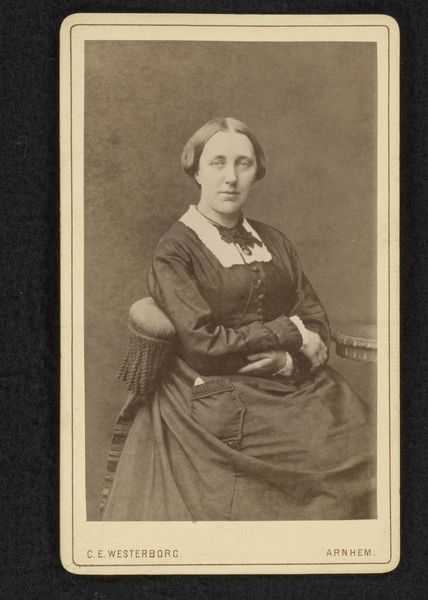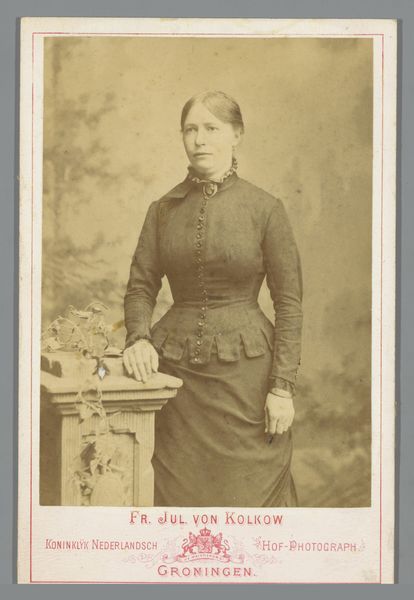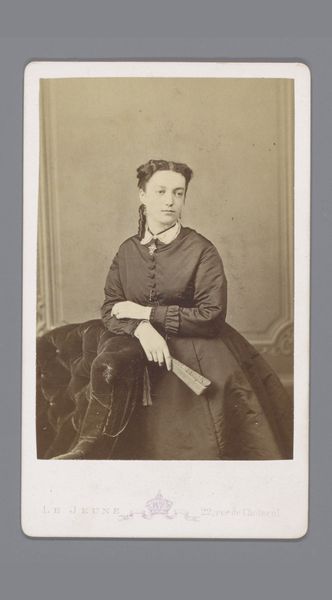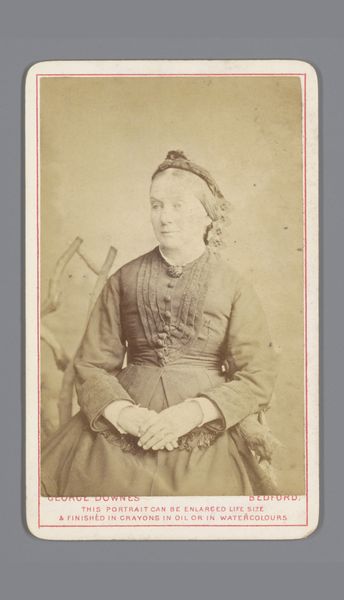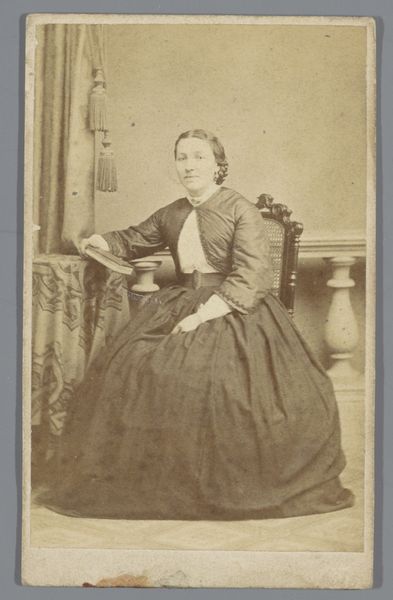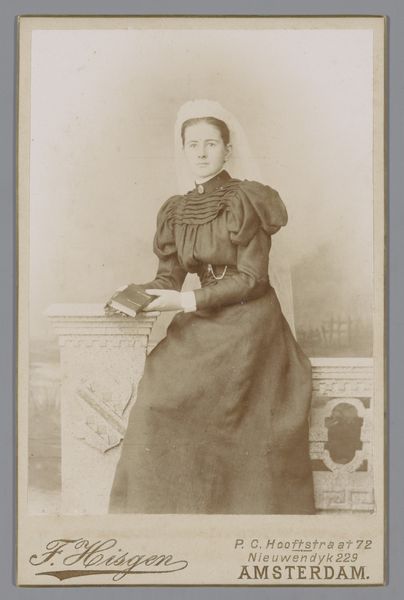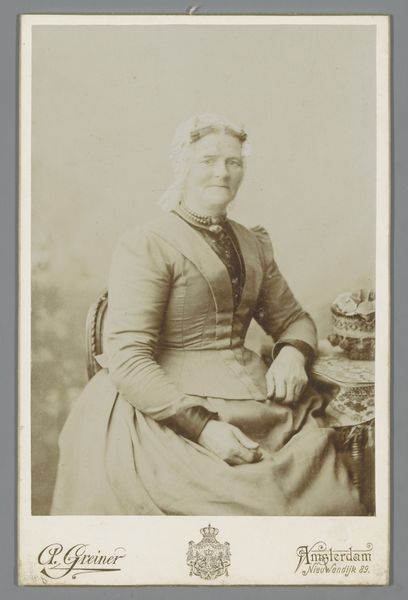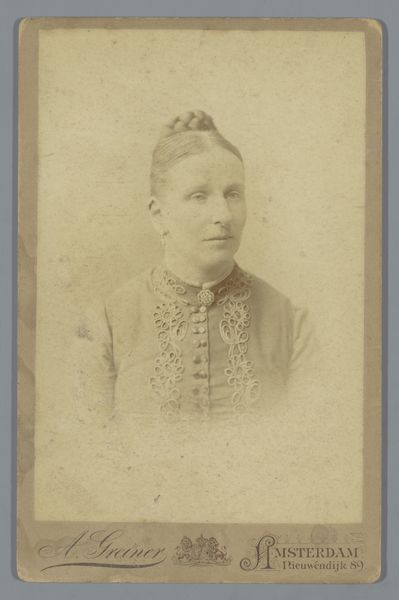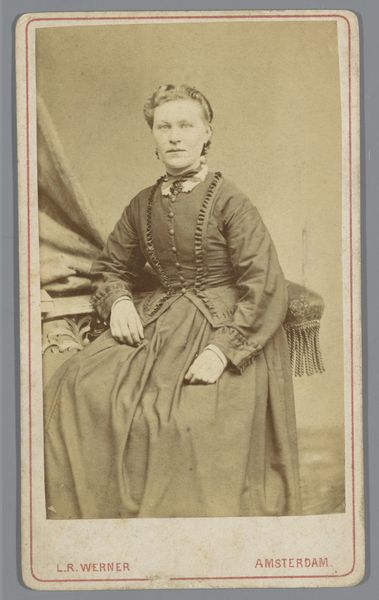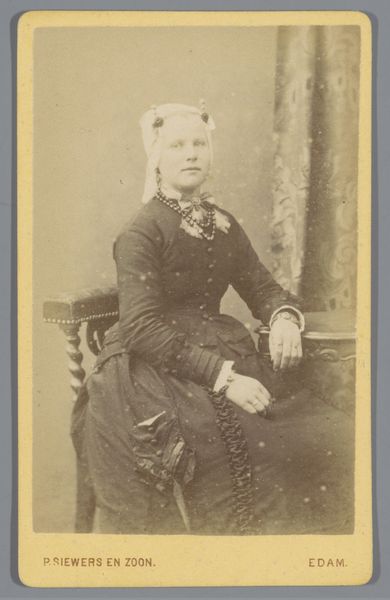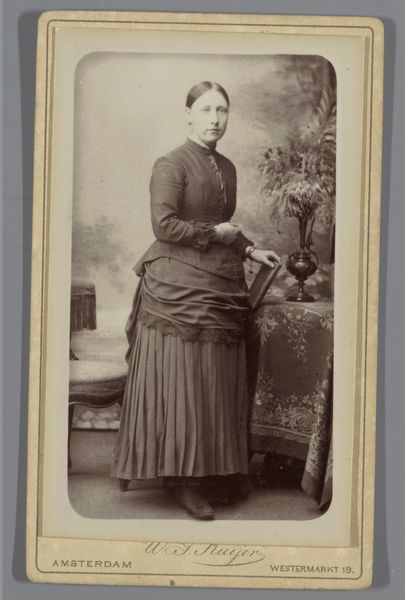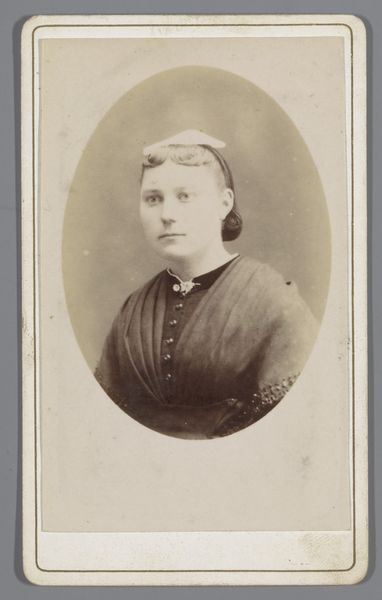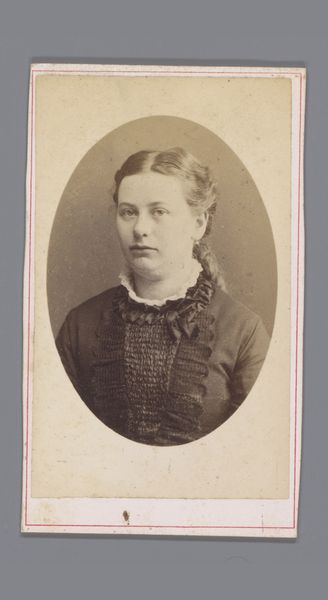
photography, albumen-print
#
portrait
#
photography
#
framed image
#
albumen-print
Dimensions: height 139 mm, width 98 mm
Copyright: Rijks Museum: Open Domain
Curator: Standing before us, we have an albumen print titled "Portret van een onbekende vrouw," or "Portrait of an Unknown Woman" attributed to Albert Greiner, circa 1861-1890. It is part of the Rijksmuseum's collection. Editor: My initial impression is one of reserved melancholy. The sepia tones and the subject's pose, leaning slightly on what looks like a carved pillar, create a sense of quiet introspection. It’s heavy. Curator: Indeed, albumen prints were popular then. The process itself, using egg whites, gave a distinctive, smooth quality to the image, but also often lends itself to such subdued coloration, affecting the emotional resonance. It’s fascinating how much cultural meaning gets encoded through a chemical process. Editor: I'm more interested in the production side, actually. I'm curious about how standardized the backgrounds were, the props. The pillar seems more symbolic than functional – almost a studio apparatus disguised as something meaningful, even powerful. Also, think of the woman sitting for what must have been an arduous process with long exposure times, the stiff poses required. This creates an artificial experience, almost a performance of self. Curator: Perhaps that performance speaks to aspirations, social identities that were becoming increasingly attainable for the burgeoning middle class. Her somewhat somber expression, the restrained attire…these might reflect the virtues prized in women of that era. The books stacked under her hand suggest learning and piety, hinting at an intellectual and spiritual life deemed appropriate for a woman of her station. Editor: Yet, the *material* of those books, the labor that produced them, would have stood in stark contrast to her social position. Books were a costly product for that time! The availability of such mass-produced items suggests larger-scale socio-economic forces that permitted a new class of people to have them as decoration in photos. Curator: Ultimately, these visual symbols – books, dress, the very act of commissioning a portrait – served as affirmations, echoing collective values and desires of the era. We glimpse ourselves reflected back. Editor: For me, though, this print foregrounds the materiality of the era, revealing the technological advancements, labor practices and shifting economic forces behind one object, creating a narrative beyond the image itself. Curator: A beautiful encapsulation, indeed. These material productions shape our memory and understanding, and invite more stories to emerge. Editor: Agreed, the photograph asks as many questions as it answers.
Comments
No comments
Be the first to comment and join the conversation on the ultimate creative platform.
